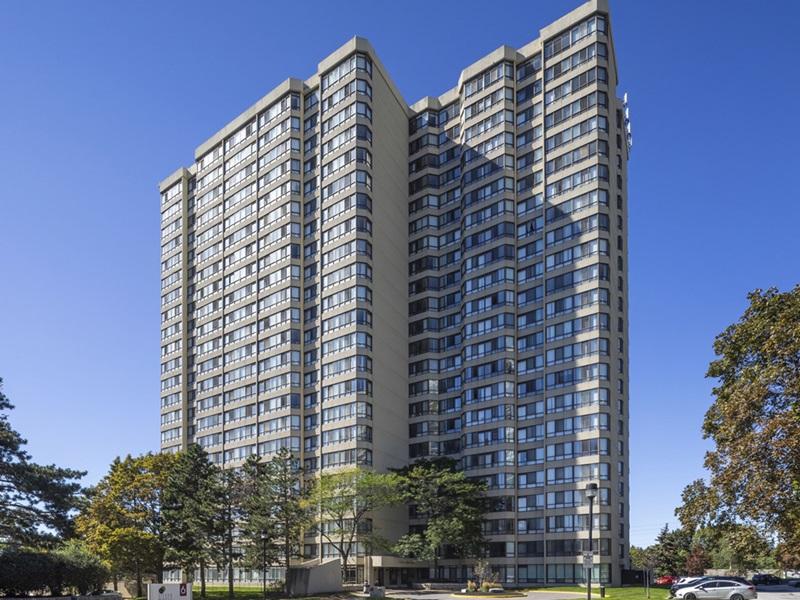
Companies abandoned their offices three years ago amid government mandates to try to contain the COVID-19 pandemic. However, since a level of relative normalcy has returned to society, both landlords and tenants have been trying to figure out how to bring these workers back.
This, in turn, has led to plenty of uncertainty in the office market.
Avison Young national director of innovation and insight Marie-France Benoit moderated a four-person panel at the Feb. 28 RealCapital conference at the Metro Toronto Convention Centre that looked at office trends and strategies.
Benoit's presentation showed vacancies and sublets have continued to increase as many workers spend at least as much time working from home as in offices.
The increases have slowed from the earlier stages of the pandemic, however, and the phenomenon is more acute in downtowns than in suburbs.
“Hybrid is not new, it has just shifted and accelerated in terms of its frequency and adoption,” Benoit said. “What we'll try to address in this session is what has changed permanently and what is a temporary change.”
More than 80 per cent of global office tenants are offering hybrid work models to their employees, according to Oxford Properties vice-president of office leasing John Peets, and will likely never return to having people in the office five days per week.
Some encouraging signs
The bulk of Dream Office REIT’s holdings are in Toronto and chief operating officer Gordon Wadley said rental rates are holding in the core.
However, landlord expenses are going up due to increased interest rates and labour and material costs, and the amount of time for landlords to do work before tenants move in and cash starts flowing has risen by about 20 per cent.
The longer it takes to get cash flow, the harder it hits net operating income and building values.
There are some encouraging signs, however, according to Wadley.
“The traditional indicators of rent and absorption in core markets seem to be going the right way, but what gives me the most solace, and what I'm most optimistic about looking into the future as a portfolio manager, is non-traditional indicators,” he said.
“Our parking income is at 95 per cent of pre-pandemic levels, albeit it's only about eight per cent of our total income.
"The other thing is security passes. We’ve printed more security cards in the last two quarters than we've probably printed in the last three years.”
Environics Analytics has 300 employees who are supposed to work in its Toronto offices at Bloor and Yonge Streets at least two days per week, but special advisor to the president Mike Williams said most aren’t.
The company is, however, protecting its space and considering adding to it instead of reducing it, which he said follows a trend of office tenants wanting to stay and grow downtown.
Williams said foot traffic is returning to downtown Toronto even if people still aren’t returning to offices in the numbers many employers and landlords would like.
More companies are expanding than contracting and new businesses are moving into downtown Toronto office space, according to Williams, who thinks the number of people in offices will eventually grow from less than 50 per cent currently to 75 to 80 per cent in the future.
Office designs may need to change
Allied Properties REIT senior VP of national operations J.P. Mackay cited survey research from global architecture, design and planning firm Gensler that said the top motivational factors for people returning to the office used to be collaboration, mentorship and social engagement.
Now it’s productivity and Mackay believes many workspaces aren’t designed to optimize that.
“Oftentimes, it's designed for collaboration and team-building, but what it's not designed for right now is individual work or engaging with individuals,” he said.
“We need to work with users in our portfolio as space partners to help them evolve their thinking around space utilization because, right now, it's not always optimal.”
Office leasing activity
Oxford has an 8.3-million-square-foot AA-and-higher office footprint in downtown Toronto with a weighted average lease term of 5.6 years and a nine-per cent vacancy rate.
Oxford did about 800,000 square feet of new, renewal and expansion office leasing last year, which Peets said was down from a norm of more than a million. The number of transactions dropped to 76 from an average of more than 100, he added.
Eighty-five per cent of Oxford’s 2022 leasing was for built space, primarily small to medium-sized suites, as Peets said there wasn’t much pick-up for base building space.
While costs are high to build out and furnish suites, tenants are willing to pay to move into space that’s ready to go upon arrival.
Peets thinks employers should have a greater responsibility in building out or changing their office space, but he realizes that’s difficult in the current higher interest rate and high-cost environment.
This is leading some large tenants to renew leases for shorter terms in existing buildings instead of moving into new ones.
These tenants don’t want to spend millions of dollars to move into a new space when they’re still unsure about how it should be designed or planned to accommodate future working patterns.
Improved amenities and social amenities
Oxford is spending money on making its lobbies, washrooms and common areas more appealing and incorporating a “hospitality mindset” while adding new amenities to its buildings to attract and retain tenants and their employees.
One new amenity that has worked particularly well in drawing people who otherwise wouldn’t have gone to the office, according to Peets, is a 7,000-square-foot fitness facility at downtown Toronto’s Richmond-Adelaide Centre.
Peets said 95 per cent of Oxford’s North American properties have some sort of green certification.
The company is investing in green technology and making its portfolio more sustainable through such things as reskinning exteriors and improving curtain walls, which can bring large rent lifts as well as “curb appeal.”
Wadley said physical amenities like gyms, game rooms and lobbies are low-hanging fruit and there should be a larger focus on social amenities to try to create a sense of community.
This can help in employee recruiting, in getting higher rents from higher-covenant tenants and in increasing net operating income.
Allied is in the process of selling three downtown Toronto data centres to pay down debt, finance development activity and reduce dependence on capital markets.
While continuing to take a disciplined approach with capital allocations, Mackay said Allied has been investing in an operating platform and curating programming to enhance office culture, wellness and sustainability.










